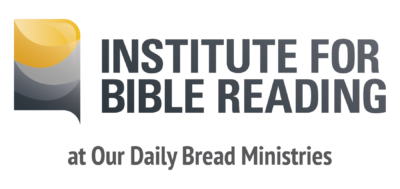How To Teach the Bible Without Chapters and Verses
We’ve been making the case over the last few months for rediscovering the power of Bible reading. In many ways, simple and straightforward reading has been the forgotten practice in the modern era of the Bible. We contend that reading whole books remains the first and most natural thing to do with the Bible.
But what about all the other things we do with the Bible? In our last two articles we explored new ways to think about Bible study and preaching. This week we’ll look at the implications our “read first” approach has for how we teach the Bible.
Reimagining Bible Teaching
As we saw with the typically modern approach to both Bible study and preaching, the fixed grid of numbered chapter and verse divisions gives the Scriptures the appearance of having been analyzed, systematized, and solved. This is further reinforced by the presence of footnotes and section headings which often appear as predetermined conclusions.
All of this has decisively shaped how people think about the Bible and what they do with it. Study has too often been reduced to stringing together a set of Bible references and trying to add up their meaning. Meanwhile, modern preaching frequently becomes an attempt to boil off the actual biblical stories (or songs, prophecies, visions, etc.) and extract some timeless doctrine or practical principle.
In both cases the modern form has misled us about what to do with the Bible.
The return to a clean, additives-free Bible invites us to rediscover the beauty and forcefulness of the Scriptures in their inspired literary forms. This has implications for how we teach the Bible also. We have the opportunity to delve once again into a living word, and to do this together, in community.
If preaching is primarily storytelling—connecting the audience and their stories to the bigger story in the Bible—teaching can now be the new space we create for exploring together what the Bible says and how the Bible works. Teaching is first of all based on the same core disciplines as preaching, that is, due diligence on being familiar with an entire literary work in the Bible, and then learning how its parts fit together to create the overall message.
 Whatever we’re doing with the Bible—reading, studying, preaching, or teaching—should be built on engagement with whole, natural units of the text. Isolated study of Bible fragments is the common thread through much of modernity’s approach to the Bible. The rediscovery of holistic encounters is the doorway to the new Bible paradigm.
Whatever we’re doing with the Bible—reading, studying, preaching, or teaching—should be built on engagement with whole, natural units of the text. Isolated study of Bible fragments is the common thread through much of modernity’s approach to the Bible. The rediscovery of holistic encounters is the doorway to the new Bible paradigm.
Exploring the text together
For starters, we should consider spending more of our time together simply reading the Bible out loud. This is the closest thing we have to the original experience of the Bible’s first audience. Something unique happens when we take the time to be still and let the Scriptures just wash over us.
Like preaching without chapters and verses, teaching is best based on an in-depth look at a single passage in context rather than jumping around from reference to reference. But now, in addition to the benefit of having trained and validated leaders preaching the Bible, we can gain from teaching experiences built on open and free-flowing dialogue.
It is one thing to take in the leader’s perspective. But learning goes deeper and tends to stick more when we get to be part of the interaction—asking our questions, listening to others, and following new threads.
This joint exploration can certainly begin with some kind of shorter presentation by one person on the chosen passage and its place in the overall literary work and the story of the Bible. Or we can simply jump in right away with a shared expedition into the riches of the biblical text. Either way, the key point in the new model of teaching is that it is community based.
The risk of truly open interactions around the Bible follows the pattern we see so often in the Bible itself. (And since real human beings are involved, it is a risk!) The Scriptures tell us of children asking parents questions (see Deuteronomy) and family discussions ensuing. We see Jesus and Paul both engaging in forceful back-and-forth exchanges in synagogues, the community gathering places of their day (see the Gospels and Acts). We hear of people sharing stories and perspectives at city gates, temple entrances, watering places, market squares, and even official gathering places of Greek philosophers.
The Bible is made for more than private study and one-way declamations. There is a time to listen, and a time to speak. Together.
It is tempting to want to tightly control the content of our teaching times, whether in the life of the church or even in other, more public settings. But this desire seems closely related to the idea that the Bible is a tightly-controlled, closed set of teachings with only a single interpretation or perspective.
The Bible is a conversation, and is meant to spark conversation.Click To TweetBut actually what we see in the Bible is the presentation of multiple perspectives. This doesn’t have to imply outright contradictory viewpoints, but if we wish to do justice to the Bible, we must reckon with its polyvocal character. For example, there are four unique presentations on the character and meaning of the life of Jesus. There are two distinct offerings of Israel’s history, with quite different emphases. There is a series of wisdom books that at the very least are having an intense dialogue on what it means to live according to God’s wisdom and what we can expect from such living.The Bible is a conversation, and is meant to spark conversation.
If the sacred library itself contains this kind of internal discussion about the story of God and world, we should not shy away from it ourselves. Modern Bible teaching methods reinforce the impression that the Scriptures are a storehouse of established facts and right answers that can be retrieved at the proper coordinates. But the Bible offers us so much more—it wants to be a community formation book, based on authentic, respectful human engagement.
God, his revelation, and his people, all together in the room and working together. That’s Bible teaching.
*Adapted from After Chapters & Verses: Engaging the Bible in the Coming Generations by Christopher R. Smith, InterVarsity Press, 2012. Rev. Dr. Smith is a Fellow at the Institute for Bible Reading. Our thanks to him for his genesis of these proposals for rethinking our use of the Bible today.



